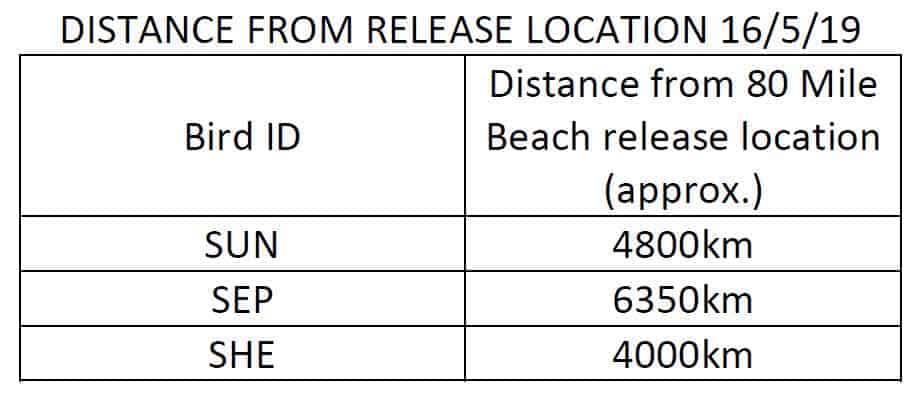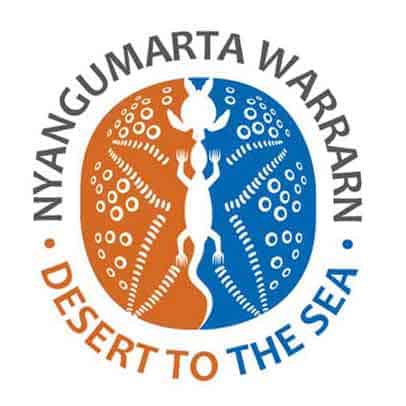Exciting progress
A contribution by Clive Minton
Although the 4 Oriental Pratincoles are now more or less “stationary” in their chosen breeding grounds, exciting progress was made by a dedicated team on the ground in west India who set out to find SEP and succeed! An excellent supplementary article has been provided and being currently circulated.

Collaboration & teamwork
by Grace Maglio
“Unity is strength…. when there is teamwork and collaboration, wonderful things can be achieved”
This week, while waiting for location readings there was considerable ‘behind the scenes’ work mainly involving lots of emails to and from colleagues in India and Taiwan. The outcome of this extra effort resulted in amazing news from India and while the weather in Taiwan looked promising for a number of days, it seems the rains have hit again, hindering quality data.
All birds are still believed to be in their chosen breeding locations with continued local movements and it is likely that all these birds are involved in breeding activity.


Oriental Pratincoles on the move
The sun will come out tomorrow – won’t it???
by Grace Maglio & Chung-Yu Chiang
Leg Flag SUN (PTT 83591)
The weather had finally cleared and, oh so slowly, the data transmissions were returning, and then, just as it looked like quality data was on its way, the weather turned once again. Although we are yet to receive accurate location data, the information we did receive does suggest that SUN remains in Hualien County and somewhere near the Shoufeng and Hualien Rivers.

One little bird, many conservation possibilities
Leg Flag SEP (PTT 83593)
What a week! In a prime example of collaboration and teamwork, SEP, ‘one little bird’, ignited the interest and excitement of many people around the world as we watched its migration from North West Australia to Mainland Southeast Asia and then to India. These very movements had the power to connect people and show how working together can drive the protection of a species and ultimately ecosystems.
In brief, after reading about SEP’s migration to India, a group of around eight individuals lead by Subbu Subramanya travelled to Bagalkot District, Karnataka on a three-day monitoring expedition. Their mission was to survey the flora and fauna of this area. The hope was to sight SEP during this three-day expedition and that is exactly what happened!
A detailed supplementary report – In Search of SEP: The Oriental Pratincole – can be read here.


How long will SHE stay?
Leg Flag SHE (PTT 83595)
After eleven weeks in the one location, and what we believe are clear signs of breeding behaviour, the next question (or two) may well be; after the chicks fledge, what will be SHE’s next move? Will the Tonle Sap Biosphere Reserve remain ‘home’ until it is time to return to the Coastal Plains of Eighty Mile Beach or will SHE surprise us all with her next move?

Just wait a SEC
SEC (PTT 83596)
Forty kilometres from Phnom Penh, in Prey Veng Province is where SEC has spent the last 58 days. SEC is probably breeding but we continue to wait for a more quality location data, which will help decide with more confidence.

Download a PDF copy of this report – Oriental Pratincole Satellite Tracking Report Number 11
Acknowledgements
Clive Minton
The extensive and expensive satellite tracking program we have set up in NWA has only been possible through the efforts and generosity of a large number of people and organizations. It is difficult to know where to start with the formal acknowledgements so I will list them – but not in any particular order of priority.
- The members of the AWSG NWA 2019 Wader and Tern Expedition and similar NWA expeditions in previous years, are particularly thanked for their efforts in the field in catching, banding and deploying transmitters on a range of species.
- Landowners are especially thanked for permission to go onto their property to enable us to catch various species in order to deploy the satellite transmitters. In particular we thank Anna Plains Station for giving us the freedom to roam over large areas of grazed grassland when counting and catching target species.
- AWSG acknowledges the Yawuru People via the offices of Nyamba Buru Yawuru Limited for permission to catch birds on the shores of Roebuck Bay, traditional lands of the Yawuru people.
- AWSG acknowledges the Karajarri and Nyangumarta people for permission to catch birds to be marked for this project on the shores of 80 Mile Beach, traditional lands of the Karajarri and Nyangumarta.
- The cost of the satellite transmitters, which cost around $5000 each, and the satellite downloading costs (around $1000-1500 per month) have been met by a variety of sources. Private individuals (Charles Allen and Doris Graham) have made most generous individual contributions. Kate Gorringe-Smith and her team of artists involved in The Overwintering Project made a large, generous donation from funds raised during their various public exhibitions. The annual NWA Expedition members, collectively, also provided significant funds each year.








